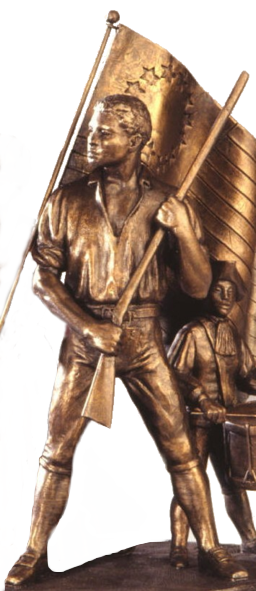The Combatants
Enslaved and free African Americans served in all of the major battles of the Revolutionary War, from Lexington and Concord to Yorktown. Most served in integrated units — something that did not recur until the Korean War.
Besides soldiers, sailors, and marines, thousands of blacks served in the salt and lead mines of Virginia, drove wagons, made weapons and ammunition, felled trees, built defenses, and spied on the British. They were killed, captured and wounded. Many applied for pensions, married and raised large families. Some received bounty land and praise from Washington, state legislatures and officers.
Blacks had been serving in the military since the French and Indian Wars. When skirmishing commenced along the road, between Lexington and Concord, there were about 500,000 blacks among the estimated population of 2.5 million. Just over 40 percent, or 820, of Connecticut’s eligible black males served from a population of around 5,100. Rhode Island contributed about the same, while the lion’s share, 1,570, came from 194 communities in Massachusetts.
Patriots from every state made conscious choices to serve. Boston’s free black soldiers won an exemption when all blacks were barred for a time after Bunker Hill.
Among the men on Lexington Green on the morning of April 19, 1775, was Prince Estabrook. Later that day the enslaved 34 year old was the first casualty of his race. He recovered and served multiple enlistments until 1783, including at Ticonderoga.
Also at Lexington was Peter Salem, a Framingham minutemen, who received his freedom upon enlistment. Others were freed at the completion of service. Some masters reneged on their promises after pocketing soldiers’ pay. Legislatures acted to stop the backsliding; courts often found for the patriots.
Around half of the black population lived in Virginia where the fear of revolts and mass escapes tempered the will to make soldiers of the enslaved. Nonetheless, at least 600 served from 82 counties.

